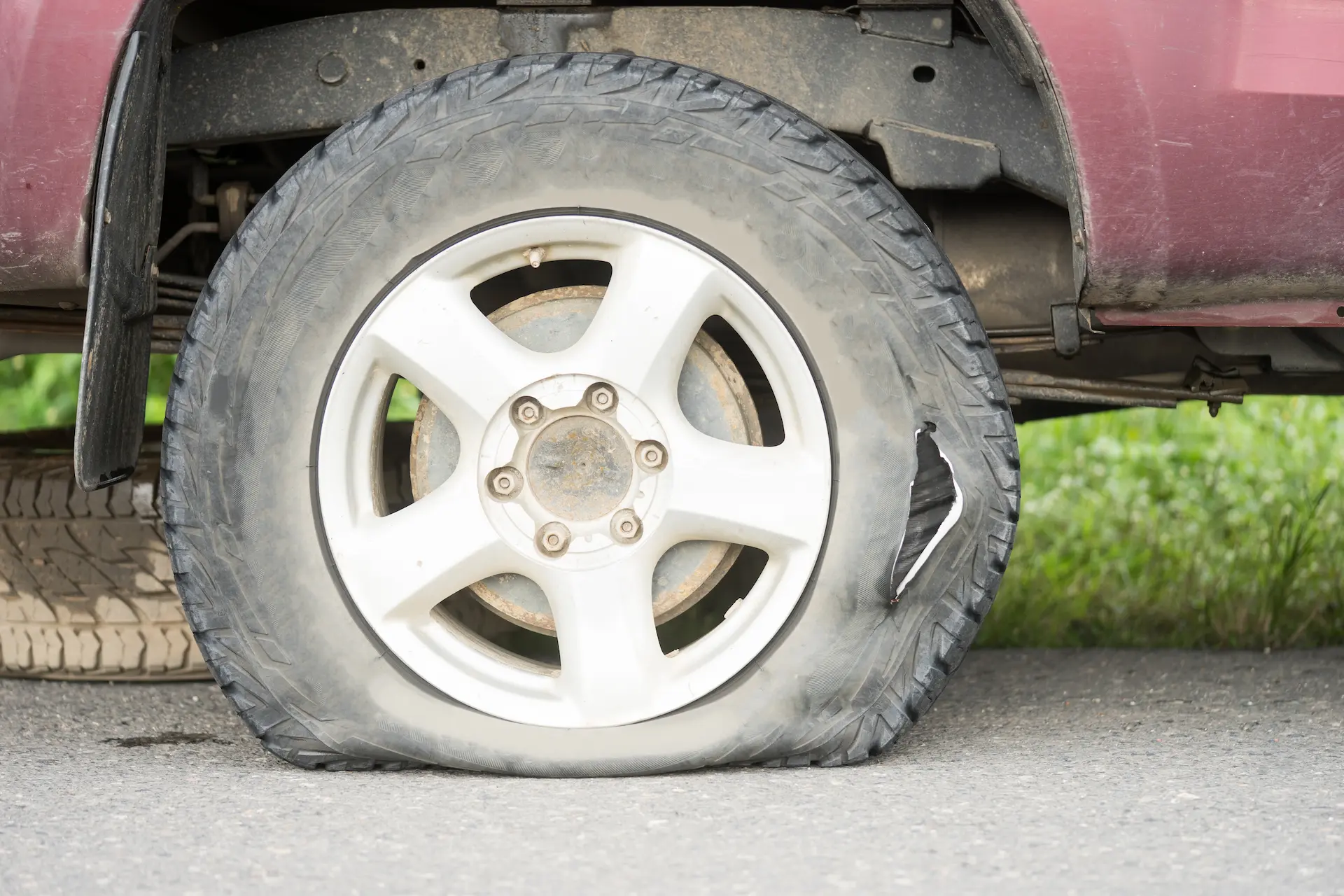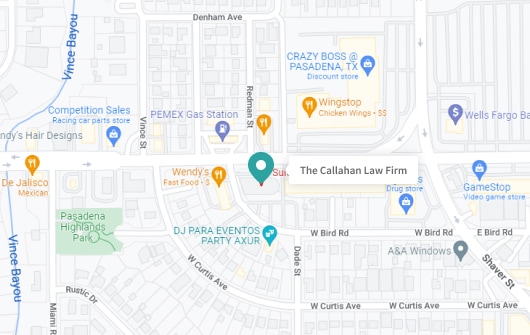Whether driving a passenger vehicle or operating a commercial truck, a sudden tire failure can lead to loss of control, rollovers, and severe accidents.
These accidents don’t just affect passenger vehicles – they’re particularly dangerous when they involve commercial trucks, where tire failures can lead to catastrophic multi-vehicle accidents. If you or a loved one has been injured in a tire-related accident, understanding your rights and options is crucial for securing the compensation you deserve.
What is a Tire Defect?
According to the National Highway Transportation Safety Administration (NHTSA), tire-related incidents claimed the lives of 562 people in 2022.
Manufacturing flaws in the tire’s internal structure, poor quality control during production, and design defects affecting tire performance are common issues that lead to failures. Material problems, particularly in the bonding process between tire components, can create hidden weaknesses that emerge only under stress. While regular maintenance can help identify some issues, manufacturing defects often remain hidden until failure occurs.
The complexity of modern tire construction means that defects can occur at multiple points in the manufacturing process. Even seemingly minor deviations from proper manufacturing procedures can result in potentially dangerous products reaching consumers. This reality underscores the importance of holding manufacturers accountable when their products fail to meet safety standards.
Loss of Control and Tire Blowouts
When a tire fails at highway speeds, maintaining control becomes extremely challenging. Commercial trucks are particularly vulnerable, as their size and weight make recovery from a tire failure especially difficult. A sudden loss of air pressure can lead to immediate vehicle instability, while tread separation often causes complete loss of control. These situations typically leave drivers with mere seconds to react, making accidents nearly impossible to avoid.
The physics of tire failure creates a cascade of dangerous effects. As the tire structure breaks down, the vehicle’s handling characteristics change dramatically. The resulting loss of control can send vehicles across multiple lanes of traffic or off the road entirely.
What Accidents Can Result from a Tire Defect?
The range of accidents resulting from tire defects is vast and often severe. Rollover accidents frequently occur when a tire fails at high speed, while head-on collisions can result from a driver’s loss of directional control. Multi-vehicle pile ups are common in commercial truck tire failures, as other drivers have limited time to react to a large truck suddenly veering out of control.
The injuries sustained in these accidents can be catastrophic. Traumatic brain injuries, spinal cord damage, and multiple fractures are common outcomes. Internal organ injuries and severe lacerations often require extensive medical treatment and prolonged recovery periods. The impact on victims extends far beyond physical injuries, affecting their ability to work, maintain relationships, and enjoy life as they did before the accident.
Receiving Compensation After a Defective Tire Accident in Houston
Victims of defective tire accidents may be entitled to significant compensation. The costs associated with these accidents extend far beyond immediate medical expenses. Future medical care, lost wages, diminished earning capacity, and ongoing rehabilitation all factor into the compensation equation. Pain and suffering, while harder to quantify, represent a substantial component of many claims.
Determining liability in tire defect cases requires careful investigation and expert analysis. Multiple parties may share responsibility, including:
- Manufacturers, distributors, and retailers in the tire supply chain
- Vehicle manufacturers who selected the tires as original equipment
- Maintenance providers who failed to identify obvious defects
- Fleet operators who neglected proper tire maintenance
Who is Liable in a Defective Tire Accident?
There are multiple parties that could bear legal responsibility for injuries and damages resulting from a tire defect. Identifying all liable parties requires a thorough investigation and a deep understanding of product liability law.
Tire manufacturers
The tire manufacturer is often responsible for defects during the design or manufacturing process. This includes major tire companies that may have cut corners in production, used substandard materials, or failed to properly test their products before releasing them to the public. Even a small manufacturing defect can lead to catastrophic failure under normal driving conditions.
Distributors and retailers
Distributors and retailers can also be held liable if they sell tires that are known to be defective or failed to properly store tires, leading to degradation before sale. In some cases, tire retailers may be responsible for improper installation or failing to warn customers about visible defects.
Vehicle manufacturers
Vehicle manufacturers may share liability if they selected inappropriate tires as original equipment for their vehicles or failed to provide adequate warnings about tire maintenance and replacement schedules. This is particularly relevant in commercial truck cases, where specific tire types are required for different axle positions and load ratings.
Maintenance providers and mechanics
Maintenance providers and mechanics could be liable if they failed to identify obvious tire defects during routine inspections or performed improper repairs. This applies especially to commercial fleet maintenance providers who are expected to maintain rigorous inspection schedules.
For commercial vehicles, fleet operators and trucking companies may bear responsibility if they:
- Failed to maintain proper tire inspection and replacement schedules.
- Ignored visible signs of tire wear or damage.
- Used inappropriate tires for the vehicle’s purpose.
- Exceeded tire load ratings or speed ratings.
Government entities might share liability in certain cases if poor road maintenance or road debris contributed to the tire failure. However, proving government liability typically involves additional legal complexities and shorter filing deadlines.
Determining liability often requires extensive investigation, including:
- Thorough examination of the failed tire.
- Review of maintenance and service records.
- Analysis of the vehicle’s black box data.
- Evaluation of the accident scene.
- Expert testimony from tire specialists.
- Review of manufacturer quality control records.
The Callahan Law Firm understands the complexity of tire defect cases and works diligently to identify all potentially liable parties. This comprehensive approach ensures our clients have the best opportunity for full compensation for their injuries and losses.
Contact Our Houston Defective Tire Accident Lawyer
When facing the aftermath of a tire defect accident, experienced legal representation becomes crucial. The Callahan Law Firm brings over 25 years of experience to your case, with attorneys who understand the complexities of product liability law and tire defect cases. Our team includes board-certified attorneys like Michael S. Callahan, who holds certification in Personal Injury Trial Law from the Texas Board of Legal Specialization – an achievement earned by only 2% of Texas attorneys.
Attorney Casey Brown’s background representing insurance companies provides invaluable insight into how these companies approach tire defect claims. This experience allows our firm to anticipate and counter the strategies commonly employed by insurance adjusters and defense attorneys, ensuring our clients receive fair consideration for their claims.
Your Advocate in Defective Tire Cases
The impact of a defective tire accident extends far beyond the immediate crash. At The Callahan Law Firm, we understand the physical, emotional, and financial challenges our clients face. Our experienced attorneys are committed to holding manufacturers accountable and securing the compensation our clients deserve. We handle all aspects of your case, from investigating the cause of the failure to negotiating with insurance companies and preparing for trial if necessary.
Contact The Callahan Law Firm today for a complimentary consultation to discuss your case. Let our experience work for you while you focus on recovery. Time limits apply to filing tire defect claims, so don’t delay seeking the legal representation you deserve.
Frequently Asked Questions
How do you prove a tire is defective?
Proving tire defects typically requires expert examination of the failed tire, analysis of manufacturing records, and investigation of similar failures. Professional engineers and tire experts can identify manufacturing flaws, design defects, and other issues that contributed to the failure.
What happens with a defective tire?
Defective tires can experience sudden failure through tread separation, sidewall failure, or complete blowout. These failures often occur without warning and can lead to immediate loss of vehicle control.
What should I do with defective tires?
If you suspect tire defects, stop using the vehicle immediately and document the tire condition. Preserve the tire for expert examination and contact a qualified attorney and NHTSA.
How do you diagnose a bad tire?
Regular inspection can reveal warning signs such as unusual wear patterns, bulges, sidewall cracks, vibration while driving, and recurring pressure loss. Professional evaluation is recommended if any concerns arise.
How do you judge tire condition?
Properly judging tire condition requires examining tread depth (minimum 2/32 inch), checking for uneven wear patterns, and inspecting sidewalls for cracks, cuts, or bulges that could indicate structural issues. The tire’s age should also be verified via the DOT code, as most manufacturers recommend replacement after 6-10 years, regardless of wear.
How do I check my tire condition?
Check your tire condition by examining tire pressure with a reliable gauge and visually inspecting the entire tire surface for irregular wear patterns, embedded objects, or unusual bumps while the tire is cool and on level ground. Pay special attention to the sidewalls for cuts or bulges, and look for tread wear bars that are flush with the tread surface, which indicates replacement is needed.



